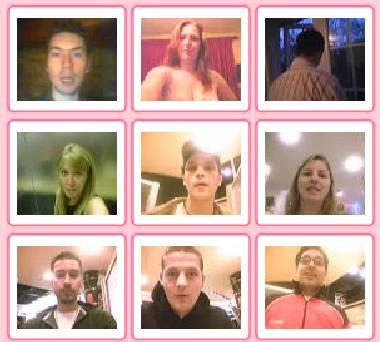| Ambient intimacy | 2007-05-28 22:46 2 comments |
 by Flemming Funch by Flemming FunchAnother reboot subject, Ambient intimacy, with Leisa Reichelt: 'Ambient Intimacy' is a term I coined recently to describe an ancient effect which has come to the fore with the use of technologies such as Flickr and Twitter. Evan Williams of Obvious (creators of Twitter) recently used this term at the International Conference of Weblogs & Social Media to explain the value that Twitter offers it's users.Excellent term. So, yes, Japanese teenage cellphone users, that's a good example. I forgot the numbers, but it is a surprisingly huge amount of SMSes they exchange every day on the average. With a cellphone, you can be in touch with your pals all the time, and you can coordinate all your activities, if you so wish, and keep each other informed. You can move around town, and organize impromptu meetings, and you no longer need so much of a schedule or planned meeting times and places. I haven't gotten into the twitter thing. For those who don't know, it is essentially that you receive SMSes that tell you little things your friends are doing. What they're eating for lunch, what they're watching on TV, what they're thinking about, or whatever else they'd want to share. I don't know, I think I'd find that a little annoying to receive as SMS. I like the idea that it is visible, though. Not all types of media are practical for this. Push media like e-mail or SMS or phone calls easily become annoying. I don't want to be contacted and interrupted to be told what somebody's having for breakfast, as I'll probably be asleep. What I wouldn't mind having would be a device that started me off with a global picture of where everybody I know are, and where I very easily could zoom in and see more. So, a global picture first, and then the detail. Doesn't have to start with location. It could be, ok, here's a graphic of what state these 50 people you care about are in. 5 are in meetings, 10 are sleeping, 15 are eating, 10 are commuting, 10 are hidden. And I can then look closer and see what else they're sharing. Within certain limits, I wouldn't necessarily mind having a webcam on top of my head so I could share what I was doing. I wouldn't leave it on all the time, but a good deal of time, I wouldn't mind. I wouldn't mind a GPS in my pocket that shared my position. Most of the time I wouldn't mind sharing info about what I'm doing. Automated and effortless systems for some of that could replace some of what blogging is about, and also turn it into something else. I probably wouldn't want to share all of it with just anybody, but there will always be people I'd happily let know most of what I do. Things like that will inevitably happen, as the technologies become available. At the same time we'll need better ways of being selective about what we want and don't want to share, and with who. |